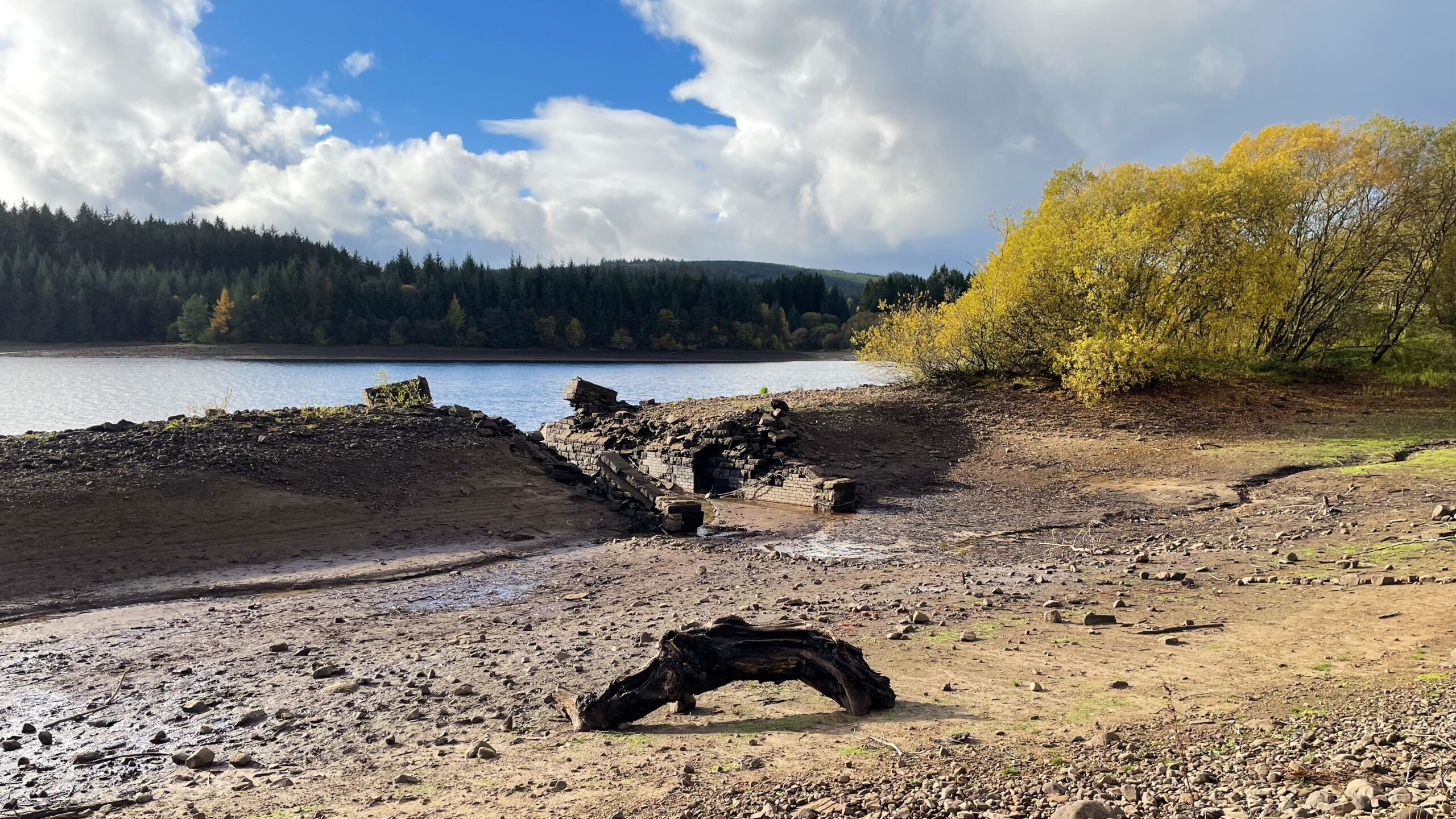I had always imagined Kielder reservoir as an endless supply of water, vast and untouchable. So when I saw it shrunken, its shoreline drawn back to reveal the bones beneath, it was a bit of a shock. There, exposed after decades under the surface, lay the embankment of a forgotten railway that once wound its way up this lonely valley.
The Border Counties Railway arrived at Kielder in 1862, built to carry coal from the Plashetts mine a couple of miles down the valley. For over a hundred years it thrummed with the noise of wagons and steam, hauling black gold south to Tyneside. Today, every trace of the station, freight yard and sidings lies drowned under Kielder’s dark waters. Only the faint line of the old incline that lowered coal trucks to the valley floor remains, clinging stubbornly to the hillside for those who care to look beneath the trees.
Yet this railway was more than a coal conveyor. It brought life and connection to a wild, cut-off corner of Northumberland. Farmers sent their wool and livestock; families ventured to towns they had only heard of. For the first time, the valley was linked to the wider world.
When Plashetts coal proved perfect for powering the mills of the Borders and the factories of Edinburgh, the line pushed north into Scotland. Prosperity followed, for a time. By 1911 the hillsides above Plashetts were alive with miners and their families. Coke ovens glowed in the night; lime kilns smoked along the valley; the clatter of the brickworks echoed through the mist. The coke was sent across the border to feed the lime kilns of Liddesdale and the woollen mills at Hawick.
Now, all that industry, all that noise and sweat, lies silent beneath the water. Only when the reservoir falls do the ghosts of the railway emerge once more, a fleeting reminder of the valley that was sacrificed to make it.

Leave a Reply